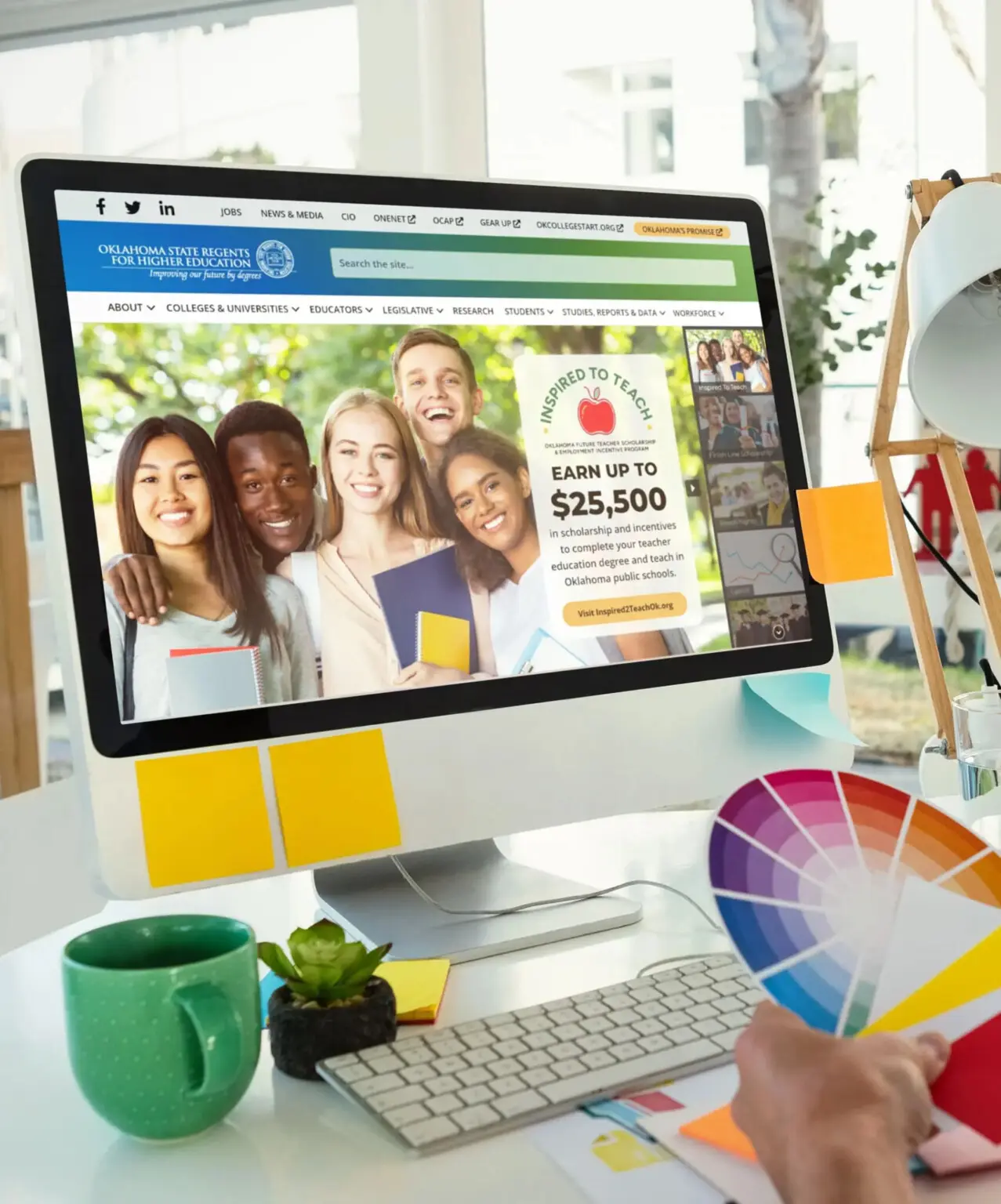The Challenge: OKHIGHERED.ORG
Since its inception in 1997, OKHIGHERED.ORG has been a trusted repository of information on higher education in Oklahoma, featuring an extensive structure of hundreds of pages and multiple navigation menus. The challenge of redesigning this sprawling 600+ page static website prompted the Oklahoma State Regents for Higher Education’s communications staff to join forces with PixelMongers. Going beyond a mere facelift, the goal was to modernize and significantly enhance the user experience.
This redesign journey, marked by usability research, adherence to WCAG standards, and data-driven design decisions, included reorganizing and modernizing such an established website. User testing was crucial in identifying and addressing challenges, informing strategic decisions for a more efficient and user-friendly design. The thorough analysis set the stage for targeted improvements, improving the website’s functionality, accessibility, and overall user satisfaction.
Phase I Usability Study - Existing (Old) Website

In Phase I, the PXM team conducted a thorough assessment of the current site by administering task-based tests to external users. Participants were assigned to three distinct user journey funnels—students and parents, K-12 educators, and higher education professionals.
The challenges identified among these user groups were significant:
- confusion navigating three separate menus;
- external links scattered across pages and menus that often led users away, discouraging their return;
- a non-intuitive search function, which unexpectedly included results from external sites; and
- pages loaded with heavy text and hyperlinks, creating information overload.
The absence of visual design cues compounded these issues, leaving testers feeling overwhelmed and resulting in confusion and inefficiencies.
Redesign Goals
Based on the initial site testing the following goals were established:
1. Prioritize Content & Address Information Overload:
- Organize crucial information with strategic visual cues.
- Incorporate icons, graphics, and increased white space for enhanced accessibility.
2. Simplify Navigation:
- Utilize traffic analytics for data-driven optimizations.
- Implement a mobile-friendly design for enhanced usability.
3. Improve Search Functionality:
- Introduce a global header search bar for localized results, aligning with SEO best practices.
- Include a secondary Google search in the footer for comprehensive search experience.
4. Accessible User Interface (WCAG):
- Adhere rigorously to WCAG accessibility standards for inclusive design.
5. Mobile-Friendly Design:
- Ensure full responsiveness for mobile devices, aligning with SEO preferences.
- Guarantee adaptability to large screens, optimizing for broader accessibility.
"Usability testing is an essential part of the design process. It allows us to step into the shoes of our users, to understand their needs, expectations, and frustrations. By observing real people interact with our designs, we uncover insights that analytics and metrics alone cannot provide. It's not just about finding flaws; it's about refining and optimizing the user experience.
Teri Simonton
Phase II Usability Study - Redesign Testing

In the second testing phase, users exhibited enhanced navigation, relying on the refined primary menu and sidebars. Notably, challenges with long sidebar menus on mobile, identified early in the testing process, were successfully addressed and resolved by the conclusion of the testing.
Phase II validated the new design’s success with a 25% improvement in task completion, a 72% reduction in time to completion, and a 119% decrease in number of clicks to complete the tasks.
Conclusion and Ongoing Commitments
In October 2023, OKHIGHERED.ORG successfully transitioned to the WordPress platform, emphasizing not just technical migration but also a commitment to accessibility and user-centric design. The website now offers an enhanced user experience, reflecting the positive outcomes of a thoughtful redesign.
Ongoing improvements and audits, guided by visitor feedback and traffic analytics, underscore a dedication to continually refine the site for the benefit of its constituents.
